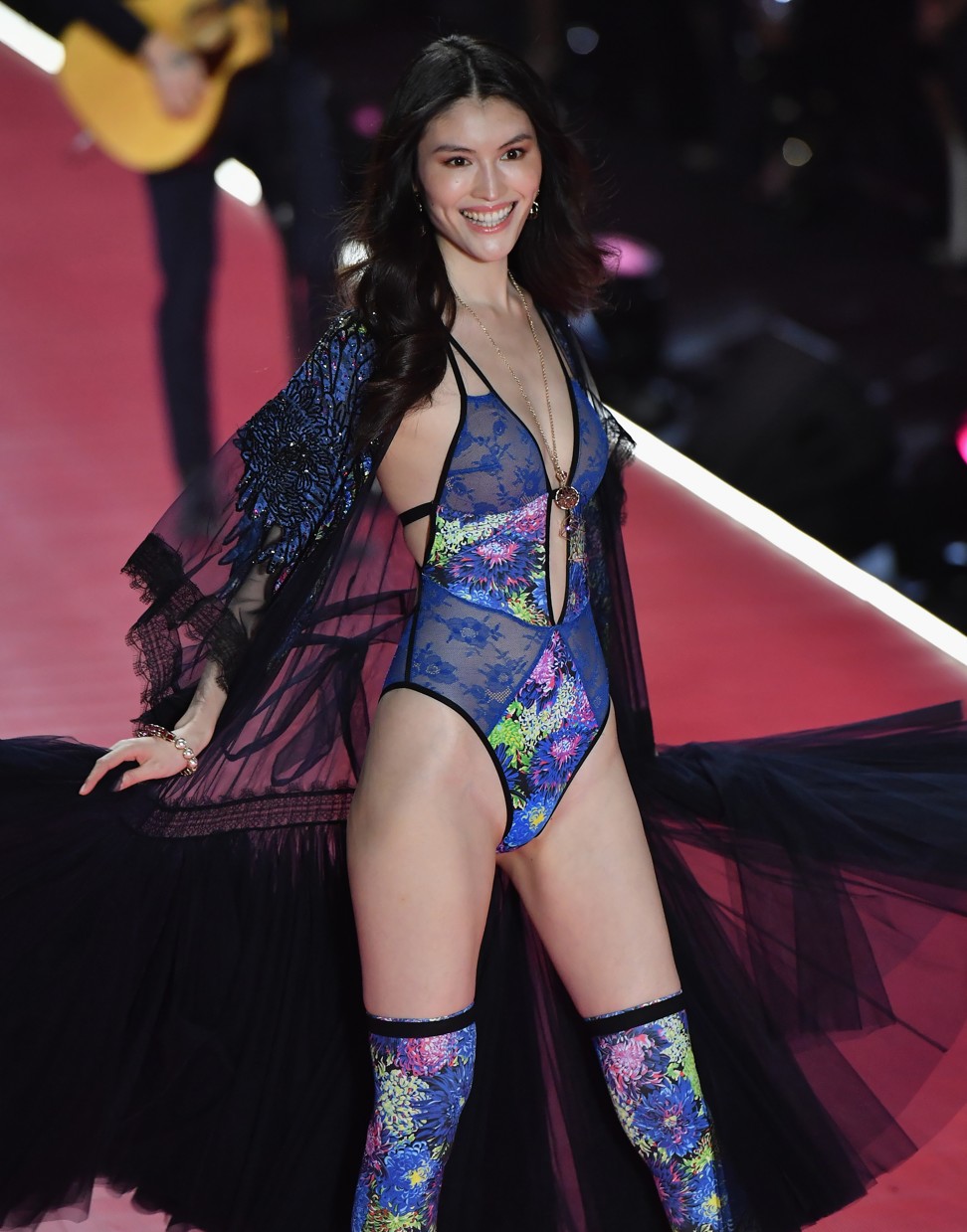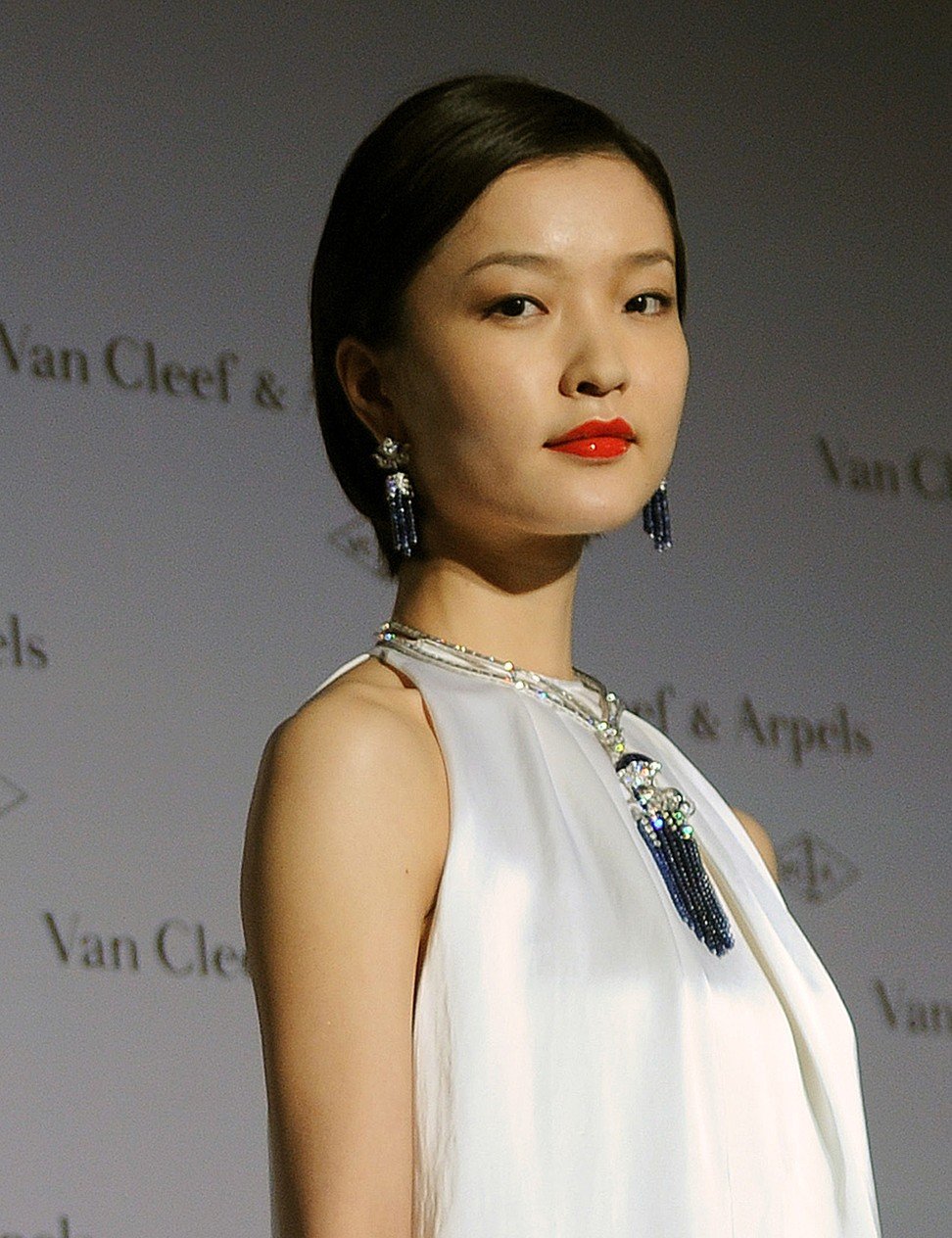
Chinese godmother of modelling talks about training supermodels and finally getting on the catwalk
- The former Asia-Pacific head of Ford Models, Grace Han, 72, has spent decades in the industry
- Lu Yan, Du Juan and Sui He are among the Chinese supermodels she has mentored
Grace Han, commonly known as Auntie Han in China, has been an outspoken model coach and judge for almost three decades. In the past 10 years, she’s also become a fashion celebrity, social media voice and advocate.
The former Asia-Pacific head of Ford Models, also known as the “Chinese godmother of modelling”, has trained many of the industry’s biggest names in China. And with her looks, tall, lean figure, and remarkable skin at 72 years of age, she is often mistaken for a former model.
Chinese boycott of Dolce & Gabbana continues at Milan Fashion Week
“I was actually kicked out of modelling school in Hong Kong as a teenager, for bad behaviour,” she says with a laugh, over a caviar breakfast at the Bulgari Hotel Shanghai’s rooftop restaurant.
Today, Han’s life seems gilded. She spends her weekends living in luxury at the Bulgari and weekdays at a Ritz-Carlton flat, and gets around in a baby pink London taxi. She’s often surrounded by a bevy of models she has trained.

Life was not always so comfortable for Han, who recalls a roller-coaster riches-to-rags-to-riches story over her seven decades. The daughter of a Shanghainese gangster, she worked on the machines in a Hong Kong garment factory before becoming a manager, and then migrated to Toronto, Canada, where she established her own factory. She moved back to China to work in fashion in 1989.
“Models must be curious and willing to learn,” she says, scrolling through her phone to show before and after photos of those under her wing.
There are numerous tall, slender young men and women in China hoping to make a living and find fame in the fashion modelling industry, which has boomed on the back of a rising economy. The concept of beauty in the country – white skin, small face, big eyes, small, long nose and cherry mouth – has long been a Westernised aesthetic, and this is now changing, Han says.

“It’s not just about the looks – for that I look for height and body proportion. But I also look for good eye contact and inner qualities that can dictate a model’s success,” she says.
“I trained many of the famous Chinese models of today, like Lu Yan, Du Juan and Sui He … and yes, it’s true that the ‘look’ of what is beautiful in China is changing … Fashion is changing and Chinese models are expected to be more international now.”
Today, Han is finally walking the catwalk as a model herself – most recently for couturier Grace Chen and contemporary Chinese brand Mukzin, despite undergoing had a knee operation earlier this year.
“The reason that I trained models is because I was not qualified to be on the stage, so they represent me on the catwalk. At 17, I wanted to be on the catwalk, but the dream finally came true at 71,” she says.
After 28 years in the industry, the septuagenarian shows no signs of slowing down. She’s become something of a social media sensation for her unvarnished opinions on the likes of singer Kris Wu (Han is a fan), the pitfalls of plastic surgery among young Chinese (“it’s an out-of-control era. Why do so many get surgery to look so strange?”) and other Chinese celebrities.

“If you are famous, you are a public persona. You have to accept public compliments, but also criticism. You open yourself to that public judgment. You can’t expect everyone to like you,” she says.
You’ve got to have the shoulders and you’ve got to have the legs. You can be a good model even without being traditionally pretty
Even before the #MeToo movement kicked in, she was lambasting industry insiders who she believed had sexually assaulted models. This landed her in hot water when her Weibo account, which had more than 300,000 followers, was suddenly shut down.
“I dare to speak out against people that others might not,” she says. And as for losing her Weibo account: “Well, I just started a new one.”
“My life is full of ups and downs and a lot of excitement,” Han says, eyes twinkling. “I was born in Shanghai but my family moved to Hong Kong when I was very young because of the communists,” she adds, referring to the events of 1949 when communist troops ousted the nationalists from the city towards the end of the Chinese civil war.
“My old Shanghai residence was where the Kerry Centre is now. My father was a mafia guy in Shanghai at the time, doing quite well, and making good money out of it.”

Han’s father moved to Hong Kong following the communist takeover, and the rest of the family joined him a year later. They initially had a great life in the city. Her father’s followers, who had also made the move to the British colony, stayed and ate with the family, “until we were broke. Our last asset was a sewing machine, which my dad had to pawn off”.
Going from wealthy to destitute, “I went through hell”, she says. The eldest of four children, she had to look after her brothers and sisters at home while making plastic flowers.
“We didn’t have food on the table sometimes. Every morning my father would dress up in a nice suit to go out. People thought he was going out to work, but he was actually going to the park to sit there all day.”
Her mother learned tailoring to support the family. At 13, Han also began to work in textiles, doing evening shifts to shore up the family income.

“The whole month I worked overtime for HK$15, and I used to give my brothers and sisters a feast in a small Cantonese restaurant on payday.”
Ambition drove Han to forge a better life. After learning English, she was soon translating for a handbag factory, then a watch factory at the start of Hong Kong’s manufacturing boom.
“I convinced them to train me from blue-collar work [polishing watch lenses] to white-collar managerial work. They were reluctant to at first because I’m a girl. I said, ‘hey, apart from my gender, we are all the same, give me one month and I’ll train others,’” she recalls.
The company was then acquired by British hong Jardine Matheson, and soon she was managing the whole factory.

Han’s introduction to the world of corporate politics resulted in a series of frustrating demotions and promotions. She trained as a fashion designer and production manager at a leather garments factory, and began taking regional trips to solve problems at other factories, gaining experience, income and a rare worldliness.
“A lot of dramatic things happened during that time, but it was good because I knew how to handle a lot of things quickly and I was only in my early 20s.”
In the 1970s, Han moved to Canada; her family joined her in 1980. They set up a huge garment factory in Toronto, which flourished. But after June 4, 1989, when the Chinese authorities crushed the student-led pro-democracy protests in Beijing, Han had a yearning to return to her native China with an abstract idea of helping the country’s development.
The move placed her at the centre of a nascent fashion scene, knocking on the doors of government ministers for textiles and offering her expertise for free. Han later became involved in the World Supermodel contest, sending China’s top competitor to the US for the contest.

She helped the Beijing government kick-start the city’s first fashion week, and the genesis of Shanghai’s first fashion week. By 1998, she had signed a deal to head Ford Models Asia, but Han says: “I had spread myself too thin. It was very difficult.”
After so many years in fashion and modelling, Han is not slowing down. She has started a lingerie line in Shanghai, and found an investor to help her acquire an Italian modelling agency called Fabbrica.
Top Chinese model Li Jingwen bares her freckles for Zara and all hell breaks loose
Fashion in China has changed drastically in the decades since Han first became involved. Models such as Lu Yan and Du Juan have long since made their mark, and a new generation is on the rise.
“In China, at the end of the day, models are human clothes hangers. You’ve got to have the shoulders and you’ve got to have the legs. You can be a good model even without being traditionally pretty,” Han says. “With the Chinese mentality, the label always changes, but the content is the same. You can print that.”
Han says some parents offer her a small fortune to train their daughters. She chooses to be selective, training just one at a time. So what does she look for in a student?

“Educating these kids is important. With the one-child policy, all the children have been spoilt rotten. So 20 years later, what will happen to this country?
“I don’t mind whether she or he can be a supermodel or not, but they need to want to learn. I’m strict. I can be rude, but I’m very caring and committed too. I train them from the inside out. It’s not just about training models who’ll go on to become successful fashion models,” says Han.
“There’s also lots of young men and women who want me to train them in etiquette and how to be. They want to learn a way of life. There’s a great desire for this all around China.”

